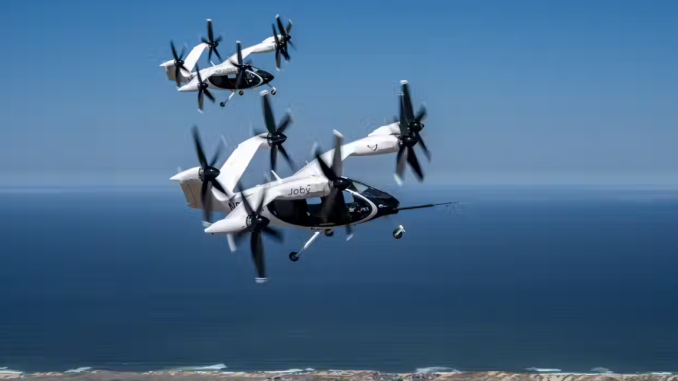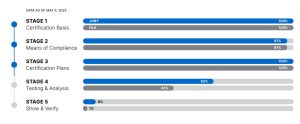
Joby Aviation announced today (May 12) that it has successfully flown two of its aircraft simultaneously for the first time.
The two-aircraft flight in Marina, California on May 9, comes two weeks after the company successfully completed flights with a full transition from vertical to cruise flight, and back again, with a pilot onboard.
“With six aircraft in our test fleet, flying multiple aircraft at a time will play an important role in accelerating our certification testing and supporting our plans to carry our first passengers next year,” said JoeBen Bevirt, Joby founder and CEO. The sixth aircraft to join Joby’s flight test programme is currently undergoing final functional checks, having been powered on for the first time last month.
Joby has partnered with Delta Air Lines and Uber to bring its service to the US and expects Los Angeles and New York City to be launch markets. Service is planned to start shortly after Joby receives type certification from the Federal Aviation Administration. Outside the US, Joby recently announced a partnership with Virgin Atlantic to bring its service to the UK and has partnered with ANA Holdings Inc., Japan’s largest airline, to bring its service to Japan.
In its latest shareholder letter, published today, the company announced it “had exceeded last quarter’s record progress on the FAA side of the fourth stage of the certification process, moving forward by 12 points to 43% complete. The Joby side of the fourth stage is now 62% complete. Moving to routinely-inhabited transition flight is a key step on the path towards FAA flight testing and was supported by thousands of hours of testing in the Company’s Integrated Test Lab, a ground-based facility which replicates all of the major systems of the aircraft.
“The ITL is a key test asset that will support forcredit certification activities with rapid, low-resource, hardware-in-the-loop test capabilities. We recently completed a series of flight tests at Edwards Air Force Base designed to prove out the multiple redundancies in the aircraft’s design. During this testing, remote, ground-based pilots handled simulated motor-out, battery-out, and other potential in-flight events. In all cases, the aircraft performed as expected, enabling Joby pilots to continue safe flight and make a controlled, vertical landing, with no changes to pilot procedures, demonstrating the enhanced safety profile of our vehicle when compared to traditional helicopters.”

For more information

